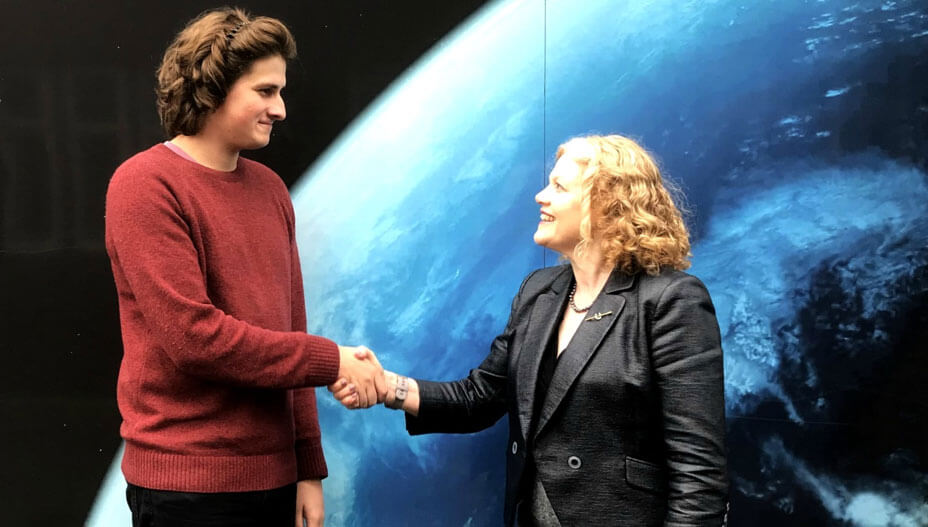Capital International Staffing would like to introduce our sponsored student… Marcus Collier-Wright
Marcus is a final year Aeronautics and Astronautics student at the University of Southampton, for his Masters he is specialising in Spacecraft Engineering. He will be regularly informing us about his challenges and achievements throughout the academic year. We look forward to hearing more about his studies!
The Faraday Cage
For my final year group project I am developing a neutraliser for the university’s gridded ion thruster project. The thruster operates by ionising a liquid propellant and then using electrically biased grids to accelerate the positively charged ions out of the thruster; thus producing thrust in accordance with Newton’s 3rd law of motion.
Expelling many positive ions from the thruster leads to a build-up of negative charge. This can result in an electrical breakdown between the thruster and the rest of the neutrally charged spacecraft, damaging the sensitive spacecraft subsystems. This is where the neutraliser comes in. As the name suggests, its role is to neutralise this negative charge build-up. Without the neutraliser the thruster cannot operate in the long-term.
Our design will use a method called microwave electron cyclotron resonance, which uses directed microwaves in conjunction with a strong magnetic field to remove electrons from the propellant atoms. These negatively charged electrons are then drawn to the positively charged ion exhaust stream from the thruster. By matching the exhaust rates of the ions from the thruster and the electrons from the neutraliser, a neutral charge on the thruster system can be maintained. This particular method gives the thruster a much longer lifespan than current neutraliser designs.
My recent work on this project has centred on the design of the Faraday Cage which will encapsulate our neutraliser. The role of the Faraday Cage is to prevent the interference of ambient space plasma with the operation of the neutraliser.
We will be using additive manufacturing on as many parts of this project as possible, including the Faraday Cage. More commonly known as 3D printing, additive manufacture builds components layer by layer. This allows far more complicated geometries to be produced than by traditional manufacturing methods, while also using less material. We will be printing our parts with stainless steel, using a method known as Selective Laser Melting (SLM).
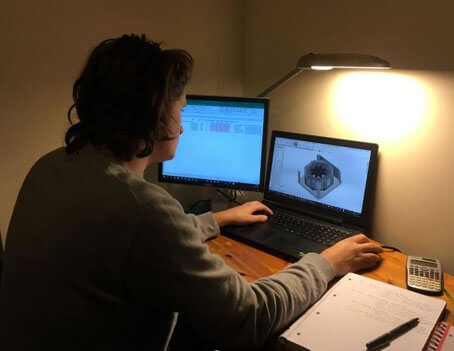
The main challenge with the design of the Faraday Cage is the necessity to manufacture many small (<1mm diameter) holes on each face of the cage. This would be problematic if the cage is printed in one part, so I have been working on a design where each face is printed separately, in the optimum orientation, before being assembled. First, a base will be printed, including the bottom face of the cage, as well as the corner columns. The large hole in the base allows the electrons to exit the neutraliser.
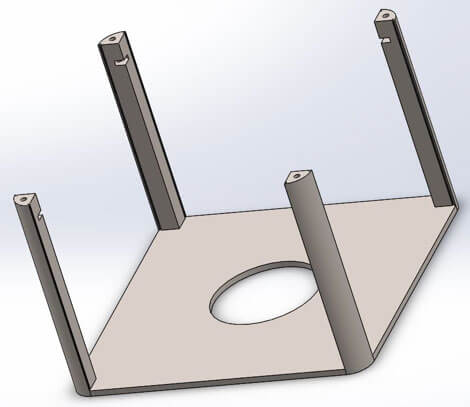
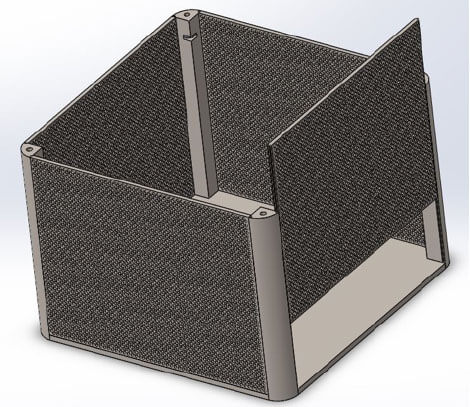
Next, each face can slide into place between the corner columns.
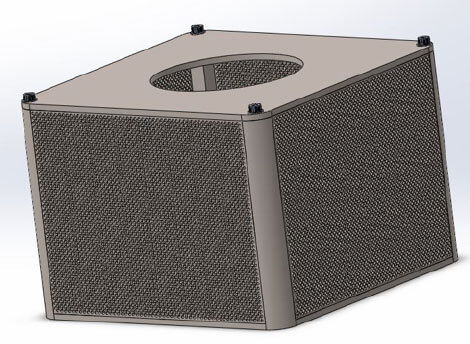
Finally, the top face will be bolted into place, resulting in the overall Faraday Cage structure.
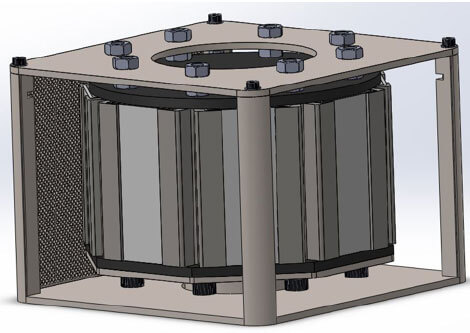
Of course, the purpose of the cage is to house the neutraliser, so here’s an idea of what the completed assembly will look like with the neutraliser inside.
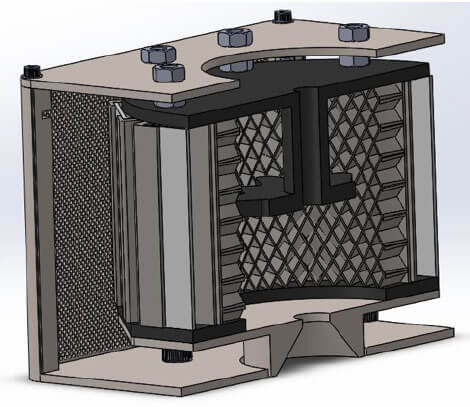
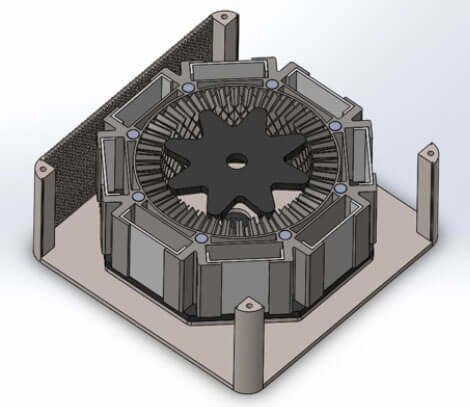
In the cutaway pictures, you can see some of the internal components of the neutraliser. The rectangular slots around the neutraliser will hold magnets which will create a magnetic field inside the neutraliser, while the dark star shaped component, an iron yoke, will strengthen this magnetic field to allow the neutraliser to operate successfully (we hope!). The grid on the walls of the neutraliser chamber helps to increase the neutraliser’s performance by increasing the chamber surface area.
Marcus Collier-Wright


